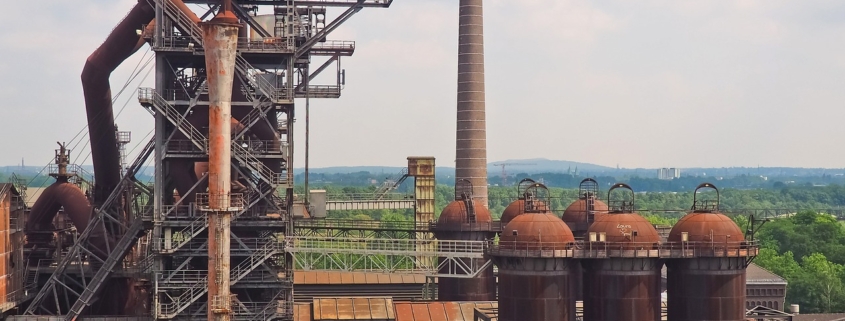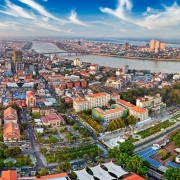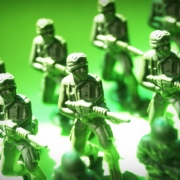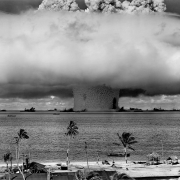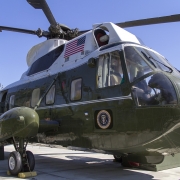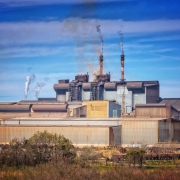What is the steel trigger price mechanism?
Topic of Study [For H2 History Students]:
Paper 1: Understanding the Global Economy (1945-2000)
Section B: Essay Writing
Theme II Chapter 1: Problems of economic liberalisation
Historical background
By the late 1970s, the share of imports for steel in the United States (US) market rose to 18 percent. This was substantially higher than the 2 percent in the late 1950s. In response, there was mounting pressure on the White House for protectionist responses.
Led by US President Jimmy Carter, the US government launched a programme to advance the domestic steel industry. At the core of this programme was the ‘Trigger Price Mechanism’ (TPM). This mechanism was targeted at the prevention of ‘unfair’ price competition from imports.
How does the Trigger Price Mechanism work?
Given that Japan was being identified as the lowest cost producer of steel in the world, its production costs would be publicly declared as ‘Trigger Prices’. Should the price of an import shipment be below the ‘trigger price’, the US government was authorised to intervene and act against the foreign supplier on the grounds of suspected dumping practices (i.e. export priced below the market price of an importing country).
Notably, the TPM functioned well in industries that were guided by price leadership. Once a market leader sets its ‘leading price’, other competitors would follow voluntarily. In 1920, the Supreme Court made a decision in the United States Steel Corporation case, declaring price leadership as an acceptable practice under the US anti-trust law. In other words, if the White House declares the ‘fair prices’ to all producers, these prices will be observed. By doing so, price competition can then be minimised.
The TPM was in effect from 1978 to 1982.
With the recession of 1980, prices of imported steel fell by less than 1 percent, and the price of domestic steel declined by 5.5 percent. In the first quarter of 1980, U.S. Steel filed dumping complaints against five European producers. By basing the trigger prices on Japanese costs, the program gave the higher-cost European producers a license to dump. […]
Nevertheless, the real price of imported steel continued to decline, producing another round of complaints from the steel industry in 1982. In addition to allegations of dumping, the steel companies maintained that foreign steel companies were being subsidized by their governments and that countervailing duties should be imposed. This charge led to the permanent suspension of the trigger price mechanism.
An excerpt taken from “Has trade protection revitalized domestic industries?” by Daniel P. Kaplan.
Did the Trigger Price Mechanism benefit the US steel industry? Assessing its impacts on the world economy.
The TPM functioned as a form of trade protection to enhance the efficiency of the domestic steel industry. Since 1960, the steel industry has not been as profitable as manufacturing, on average. With rising debts and low profitability, the domestic steel producers struggled to accumulate finances. Even with the use of the TPM, the profits generated were inadequate.
In summary, efforts to modernise the steel industry under the Carter administration were disappointing. By 1984, employment in the steel industry fell by nearly fifty percent compared to 1968. Instead, the TPM contributed to an increase in the world price of steel, indicating an adverse impact on the global economy.
The trigger price mechanism has, however, altered the geographic pattern of imports, cutting into the Japanese share of the U.S. market to the advantage not only of European producers, which was part of the original intent, but of such fast-growing newcomers as Brazil, Korea, and Taiwan.
The most striking impact, however, of a trigger price mechanism based on Japanese costs, given the rapid appreciation of the yen, has been to raise prices. Trigger price levels rose by more than 10 percent in 1978, almost entirely as a result of the yen’s appreciation, and were scheduled to rise by another 7 percent on January 1, 1979. […] In the words of the EEC’s steel producers’ group, Eurofer, the trigger price mechanism “has raised steel prices all around the world.”
An excerpt taken from “The International Environment: Readings” by Eston T. White and Walter R. Milliken.
Join our JC History Tuition to learn more about the Global Economy. The H2 and H1 History Tuition feature online discussion and writing practices to enhance your knowledge application skills. Get useful study notes and clarify your doubts on the subject with the tutor. You can also follow our Telegram Channel to get useful updates.
We have other JC tuition classes, such as JC Math Tuition and JC Chemistry Tuition. For Secondary Tuition, we provide Secondary English Tuition, Secondary Math tuition, Secondary Chemistry Tuition, Social Studies Tuition, Geography, History Tuition and Secondary Economics Tuition. For Primary Tuition, we have Primary English, Math and Science Tuition. Call 9658 5789 to find out more.

